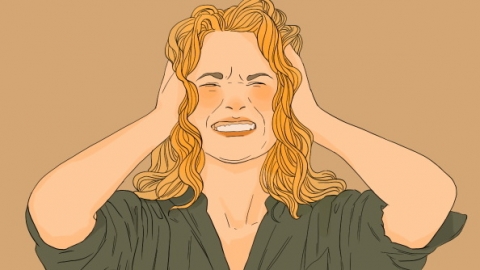How to distinguish hypertension caused by anxiety disorder
To distinguish hypertension caused by anxiety disorder, judgments can be made based on the correlation between blood pressure fluctuations and emotional changes, accompanying symptoms during blood pressure elevation, characteristics of blood pressure monitoring timing, comparison with baseline blood pressure, and differences in response to antihypertensive medications. A comprehensive assessment combining multiple factors is required. If blood pressure repeatedly shows abnormalities or anxiety symptoms are significant, timely medical consultation is recommended.
1. Blood pressure fluctuation in relation to emotions: During anxiety episodes—such as when feeling tense or irritable—blood pressure rises明显; once emotions stabilize, blood pressure may naturally return to normal levels. This indicates a direct and rapid correspondence between emotional changes and blood pressure variation.
2. Accompanying symptoms during blood pressure elevation: In addition to elevated blood pressure, typical anxiety symptoms often occur simultaneously, such as palpitations, chest tightness, dizziness, sweating, and restlessness. These symptoms appear concurrently with blood pressure rise and subside together when emotional distress eases.

3. Timing characteristics of blood pressure monitoring: Under daily calm conditions—such as upon waking before physical activity—blood pressure remains normal. It increases only during stressful events or nighttime anxiety and insomnia, rather than showing persistent elevation throughout the day.
4. Comparison with baseline blood pressure: When compared to previous baseline blood pressure measured during calm states, individuals with anxiety-related hypertension typically show blood pressure levels consistent with their baseline in the absence of anxiety, without a trend toward sustained hypertension.
5. Differences in response to antihypertensive medication: Blood pressure may not significantly decrease with conventional antihypertensive drugs alone. However, when combined with anti-anxiety interventions—such as emotional regulation and psychological counseling—blood pressure normalizes more quickly, demonstrating greater effectiveness of combined "antihypertensive + anti-anxiety" treatment.
In daily life, it's important to regularly monitor blood pressure under different emotional states, record the relationship between blood pressure changes and emotions, maintain a regular sleep schedule avoiding late nights, and use techniques like deep breathing or walking to alleviate anxiety, thereby helping to stabilize blood pressure.






